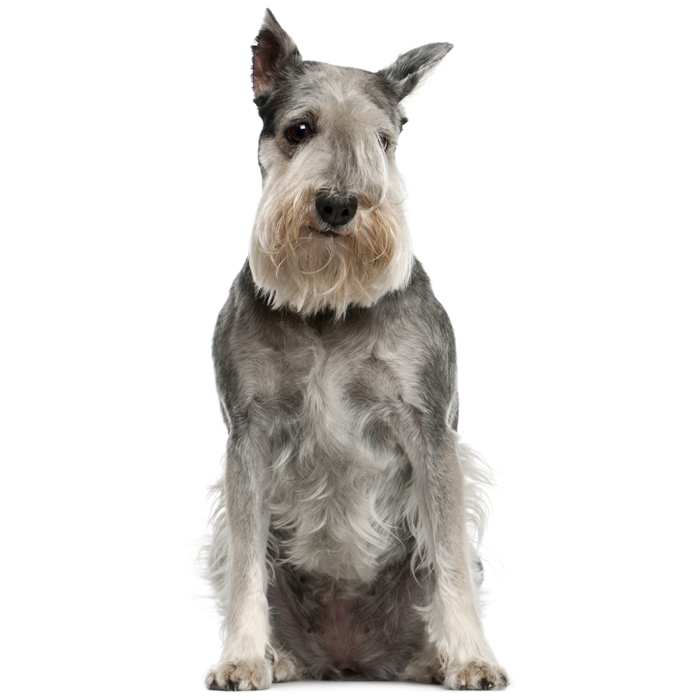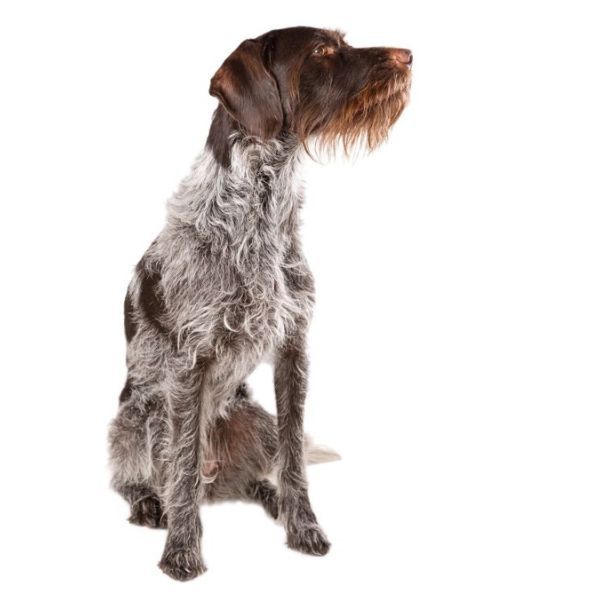Staffordshire Bull Terrier


| Recommended for | Singles, families |
| Breed Classification | Terrier group |
| Other names | Staffie, Staffy |
| Lifespan | 12 -14 years |
| Size | Medium |
| Temperament | Loving, loyal, strong-willed |
| Intelligence | Average |
| Tendency to bark | Average |
| Maintenance Level | Medium |
| Health Risk | This breed has an around average probability of having health issues in its lifetime, hence it is one of the more affordable breeds to insure. |
Insuring a Staffordshire Bull Terrier?
Get our award-winning Nose-to-Tail Cover with up to $30k annual benefit limit, up to 90% of eligible vet bills back, and no sub-limits.
Get a quick quote
Is this breed right for you?
Try our breed selector quiz to find out your best matching breed!
Insuring a Staffordshire Bull Terrier?
Get our award-winning Nose-to-Tail Cover with up to $30k annual benefit limit, up to 90% of eligible vet bills back, and no sub-limits.
Get a quick quote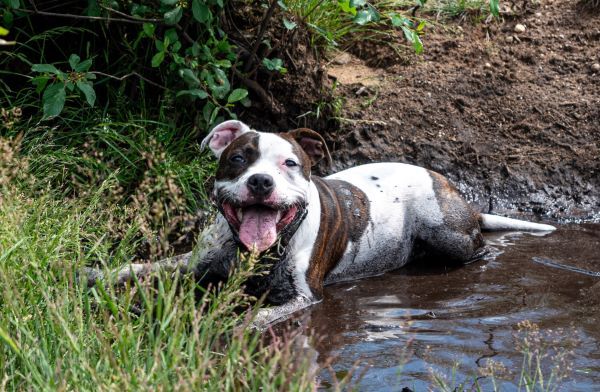
Breed history of Staffordshire Bull Terriers
The Staffordshire Bull Terrier was developed in the 1700’s and 1800’s in England for the purpose of blood sports and dog fighting. Classified as a “bull type” along with the Bull Terrier and American Staffordshire Terrier, these breeds all share similar origins. The grandfather of these breeds was the Bulldog, created for the horrifying spectacle of bull-baiting.
When blood sports were outlawed in 1835, pit-dog fighting moved underground. Bulldogs were crossed with terriers to create faster, feistier fighting dogs; of these, the Staffie emerged as the most successful and enduring. The breed name is a nod to the county of Staffordshire, where the breed was especially popular.
After its use in blood sport waned, the Staffordshire Bull Terrier was developed as a companion dog. Since the early 1900’s most Staffordshire Bull Terrier breeders have focused on eliminating the aggressive nature of the breed and the modern version is a gentle, enthusiastic and friendly family pet.
The breed was introduced to Australia relatively recently, entering this country for the first time in the mid-sixties. Between 1996 and 2006 there were over 70,000 Staffordshire Bull Terrier registrations in Australia, making it one of the country’s most popular dog breeds.
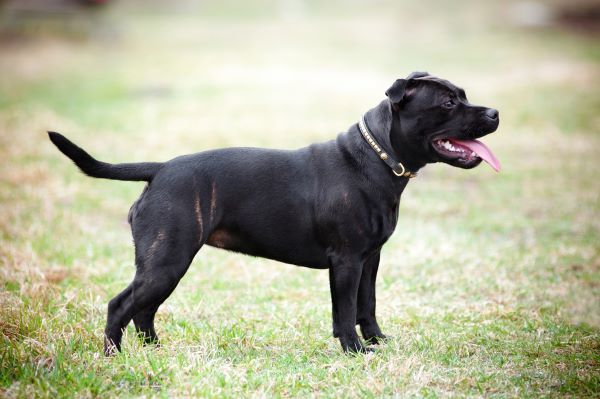
Physical description of Staffordshire Bull Terriers
The Staffordshire Bull Terrier, is a medium sized dog with a muscular, athletic body, a broad chest and strong shoulders. They have a broad, square head with a short muzzle, wide jaw and pronounced cheeks, which makes it look like they’re smiling, and small ears that fold back. Short, wide and slightly longer than they are tall, they have a low centre of gravity.
They have a short, smooth coat that comes in several colours or can be a mix of these colours.
| Weight range | Males 13 to 17 kg; females 11 to 15 kg |
| Height range | Males 36 to 41 cm; females 33 to 38 cm |
| Colours | Various colours, including red, fawn, black, white, blue or brindle |
| Coat length | Short |

Staffordshire Bull Terrier personality and temperament
The Staffordshire Bull Terrier is highly inquisitive, eager to please, loves contact with humans, is extremely loyal and is therefore loved by many Australian families. They are brave, persistent, gentle and playful and tend to adore children. If you have ever owned a Staffy, you will know that they are the most loving family dogs that will simply melt your heart. They say, “Once a Staffy owner, always a Staffy owner”.
Staffies are people dogs and they constantly want to give love and receive affection from their humans. They are big sooks in a very powerful body, which they are not aware of. They make great lap dogs if you have a lap that is big and strong enough!
Obedient when they want to please, they can also be notoriously stubborn and independent. For this reason, the Staffordshire does better with a strong, experienced owner or pack leader—someone who is confident but can lay down the law and will when necessary. They are not recommended for first time owners or timid personalities.
Unfairly, Staffies have earned a bad reputation through certain cases of poor upbringing and misuse of their traits and their past use as fighting dogs.
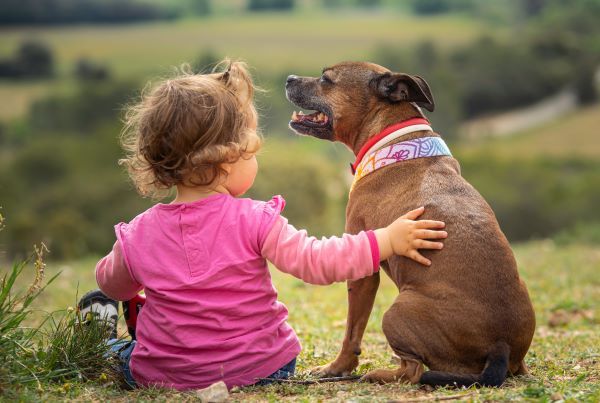
Staffordshire Bull Terriers with kids and other pets
Staffies are patient, gentle and playful and tend to adore children. They actually have a fantastic reputation with children and are commonly referred to as the ‘nanny dog’. Nevertheless, it is advisable to close supervise younger children during playtime because the Staffy’s eager personality, paired with its strong body, can often prove overwhelming for kids under the age of eight.
Staffies were originally bred to fight other dogs, and most have retained a strong fighting instinct, making it vital that Staffie pups be socialised with other dogs to learn good canine manners. They are known for being tolerant of animals that they’ve grown up with, so early socialisation is the key. They can be unpredictable with strange dogs, so keeping them on-leash in open areas is advisable.
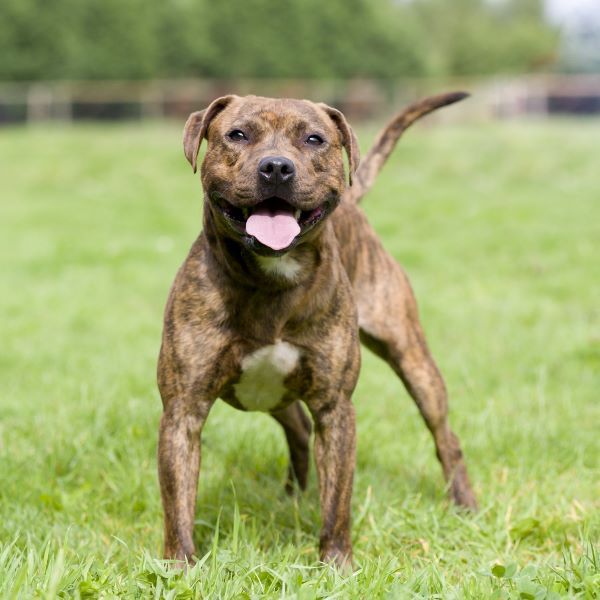
Staffordshire Bull Terrier training and exercise
Staffordshire Bull Terriers are energetic dogs so exercise is an essential part of their daily routine. A good long walk at is a must, the longer the better. Sufficient exercise is an important way to avoid the development of behavioural problems in the breed. This can also be chasing a ball in the backyard or running alongside a biking or jogging owner. They can be heat intolerant and should never be over-exercised in warm or humid weather.
Clear, consistent training from a young age, paired with firm and consistent discipline, is essential for maintaining a well behaved and happy adult Staffordshire Bull Terrier. However, because of their strong will and fighting instinct they are considered to be particularly difficult to train, especially for a novice owner.
| Energy level | High |
| Exercise requirements | High |
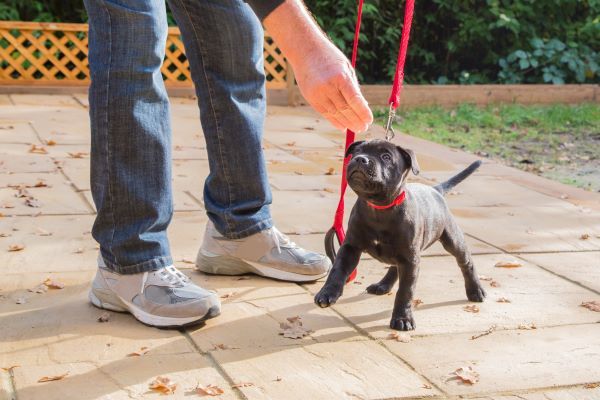
Staffordshire Bull Terrier feeding and nutrition
The Staffordshire Bull Terrier should be fed a premium, high-quality dog food appropriate to the dog’s age (puppy, adult, or senior) and activity level.
Staffies have a voracious appetite and will not say no to any food. Without plenty of exercise, the breed is prone to weight gain, which can result in health problems affecting the joints.
Allergies and itchy skin may be related to a dog’s diet. Check with your vet if you have any concerns about your Staffy’s weight or health.
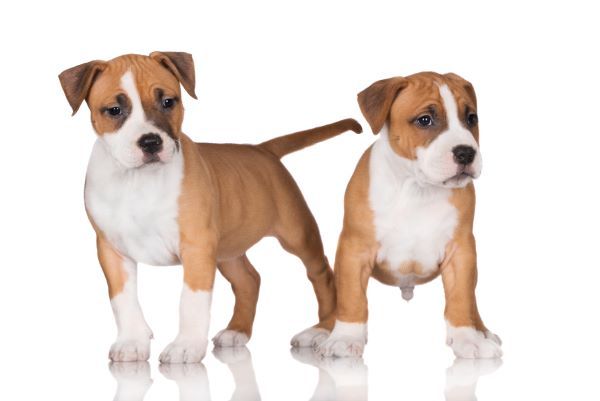
Staffordshire Bull Terrier care and grooming
Staffys are generally easy to care for – their short coats need only a weekly brushing with a soft brush or glove to remove any dirt or loose hair and to keep the coat shiny.
They shed moderately throughout the year and experience one heavy shedding period before summer. As they are prone to skin allergies, weekly bathing with a gentle soap formulated for sensitive skin may be needed, especially if they spend a lot of time outdoors.
Note that because of their short coats, they really don’t appreciate being left out in the cold. They want to be where it’s warm – inside your house with you.
Health issues for Staffordshire Bull Terriers
- Hip Dysplasia is a hereditary condition that is common in many breeds where the hip doesn’t develop as it should, often resulting in prolonged limping and eventually lameness in later life.
- Patellar luxation occurs when the kneecap is dislocated from its correct anatomical position in the groove of the thigh bone. This condition occurs more often in female dogs. The dog feels pain or discomfort only at the moment the kneecap slides out of position. Once it is out of position, sudden lameness, occasional skipping, or abnormal hindlimb movement will typically occur. Depending on the severity of the condition, arthritis may set in to the affected joint.
- Cataracts are an opacity or cloudiness in the lenses of the eye, which can be complete or partial. Dogs with more than 60 percent opacity in their lens can have partial blindness or complete loss of vision. Cataracts usually occur in both eyes, with the condition being more common in dogs than in any other species. Cataracts are progressive and if not treated, can result in blindness. The most suitable mode of treatment is early surgery.
- Skin Allergies can affect Staffys, some of which may be genetic. Symptoms can include scratching, biting or rubbing the skin. Hair loss, redness, bleeding, flaky skin, texture changes, lumps or an unusual smell are other indications.
Not all conditions are covered by Pet Insurance. For details of Bow Wow Meow Pet Insurance cover, refer to the Product Disclosure Statement.
Thinking about insuring a Staffordshire Bull Terrier
Thinking about insuring a Staffordshire Bull Terrier
Learn moreThinking about insuring a Staffordshire Bull Terrier
Learn moreFree engraved pet ID tag on sign up3
Customer Satisfaction
21 day cooling off
Easy to use Pet Portal

GapOnly® in vet claims
FOR MORE INFORMATION
The Staffordshire Bull Terrier Club of WA: http://www.sbtcwa.com.au/
The Staffordshire Bull Terrier Club of Victoria: http://www.sbtcv.org.au/
QLD Staffy & Amstaff Rescue: http://www.qldstaffyandamstaffrescue.org.au/
Stafford Rescue Victoria: http://staffordrescuevictoria.org.au/
Saving Staffies: https://savingstaffies.org.au/


